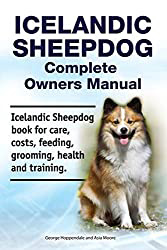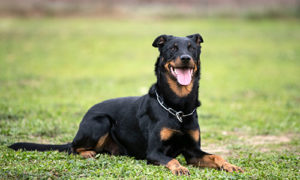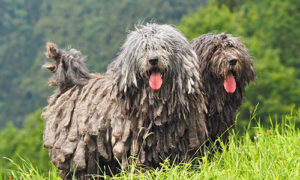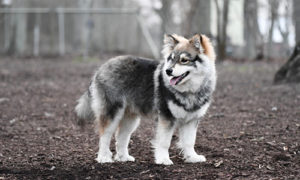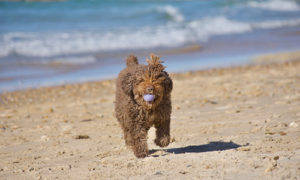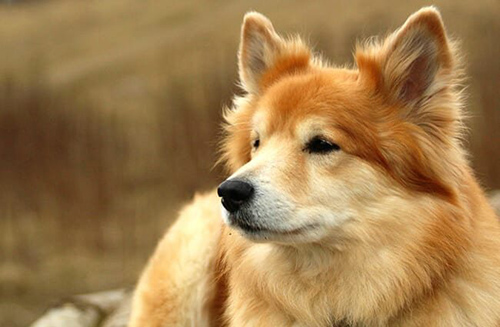
The Icelandic Sheepdog is Iceland’s only native breed. These dogs derive from ancestors who have arrived with Vikings in the ninth and tenth centuries. Over the centuries, the Icelandic Sheepdog became perfectly adapted to the Island’s terrain and farming methods and was widely used as a general-purpose farm dog.
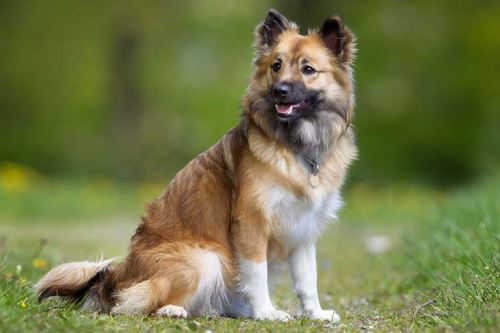
The breed became rare in the late nineteenth and early to mid-twentieth centuries. Efforts to revive the breed began in the late 1960s when some were imported to California to start a breeding program.
Today the breed is primarily a companion but is still used for herding in Iceland. Icelandic Sheepdogs are also trained for search and rescue.
This dog is a typical Nordic Spitz breed, rectangular in proportion with a confident, lively bearing and an abundant coat. It has a moderately long, muscular, slightly arched neck, a level, sturdy back; a deep chest; and a high-set tail curled over and touching the back.
The head is triangular with flat cheeks and a tapered muzzle. The eyes are medium-sized and almond-shaped, contributing to a gentle, happy expression. The ears are erect, medium-sized, and triangular, with rounded tips.
Icelandic Sheepdog Breed Facts
- Activity Level: The Icelandic Sheepdog is a hardy, agile working dog, but it does not have the high drive of some other herding breeds. These dogs are versatile and playful. Also, they do well in dog sports such as agility, herding, and tracking. They also love long walks, hiking, and swimming. Some will climb or jump over fences.
- POPULARITY: Rare
- FAMILY: Spitz
- AREA OF ORIGIN: Iceland
- DATE OF ORIGIN: Ancient
- ORIGINAL FUNCTION: Herding sheep, cattle, horses
- TODAY’S FUNCTION: Herding, companion
- OTHER NAME: Iceland Spitz, Iceland Dog, Friaar Dog, Islenskur Fjarhundur
Temperament
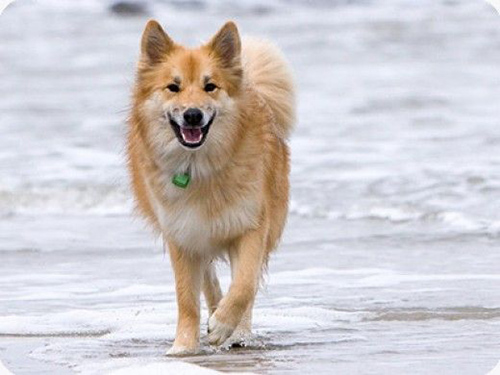
Icelandic Sheepdogs are cheerful, inquisitive, and playful; this is an excellent family dog, famed for its wide smile. These dogs are very sociable and need plenty of interaction with their owners; they can suffer from separation anxiety without adequate attention.
Icelandic’s are responsive and eager to please but naturally soft tempered. Training must be gentle and positive; rough handling or harsh training can cause stress barking. This is an outgoing breed that will get along well with people and other animals if socialized properly.
Grooming
The Icelandic Sheepdog requires weekly brushing.
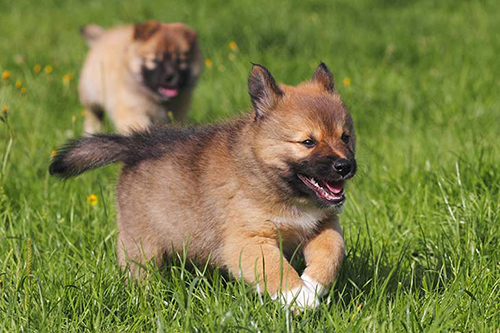
- Coat: These Sheepdogs possesses a thick, waterproof, protective double coat in which the outer coat is coarse, and the undercoat is thick and soft. The shorthaired coat type has a medium-length outer coat, and the longhaired coat type has a slightly longer outer coat. However, both have bushy hair on the tail, shorter hair on the face, top of the head, ears, and fronts of the legs; and longer hair on the neck, chest, and back of the thighs.
- Color: The main color should be chocolate brown, gray, black, or a shade of tan. The most common markings are white, tricolor (white with tan points) on a black dog, and a black mask and some black in the body coat on a tan or gray dog.
Icelandic Sheepdog Health
- Major concerns: CHD
- Minor concerns: none
- Occasionally seen: cryptorchidism
- Suggested tests: hip
- Life span: 11-14 years
Buying an Icelandic Sheepdog and Breeder Information
It is important to treat this dog as a member of the family.
- Parent Club: Icelandic Sheepdog Association of America (www.icelanddogs.com); established in 1997
- Rescue: The National Icelandic Sheepdog Rescue Alliance (www.nationalicelandicsheepdogrescuealliance.org)

